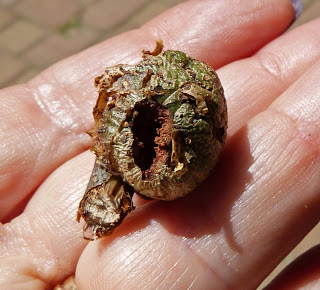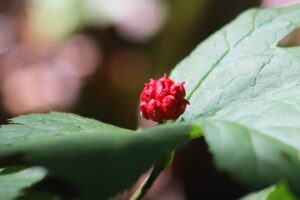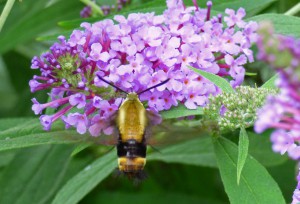When is an acorn not an acorn? Sometimes you look up into the branches of an oak tree and see some peculiar looking acorns. They seem to encircle a twig, and are very deformed looking. Well, they aren’t acorns at all, but some variety of oak gall.
Gouty and horned galls are abnormal growths or swellings comprised of plant tissue found on leaves, twigs, or branches. These deformities are caused by a tiny, non-stinging, wasp which produces a chemical or stimuli inducing the plant to produce large, woody twig galls. Most galls are aesthetically not pretty, but normally cause little damage to tree. However, severe infections may bring about the decline of the tree. Chemical control is seldom suggested for management. The horned oak gall has small horns that protrude from around the circumference of the gall. It can be found on pin, scrub, blackjack, and water oaks. The gouty oak twig gall is smooth and can be found on pin, scarlet, red and black oaks.
In early spring a tiny wasp of the cynipidae family emerge from woody stem galls. The females lay eggs on the veins of the oak leaf buds. Male and female wasps emerge from these tiny, blister type galls on the leaf vein about mid summer. Mated females deposit eggs in young oak twigs. The next spring small swellings develop on the twigs and enlarge over the next two or three years. The galls provide protection, food, and shelter for the developing larvae. When the larvae reach maturity, the horned galls developed small spines or horns. An adult wasp emerges from each horn and another life cycle of wasps begins.
If you look carefully at other plants, you may find other galls as well, in golden rod for example. Just keep a sharp eye out for them!





